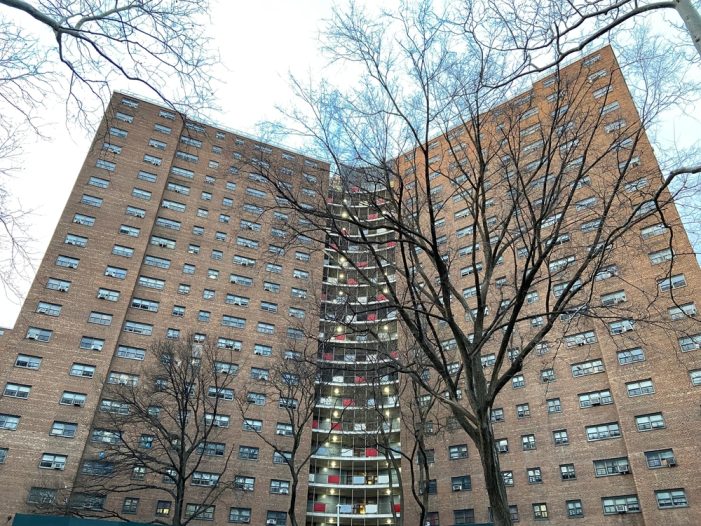A group of state representatives are asking Gov. Kathy Hochul to steer some of the $4.2 billion in Bond Act funds for energy upgrades in public housing, where tenants are subject to “outdated boilers, poor ventilation, mold, and temperature extremes that contribute to high asthma hospitalization rates.”
Back in 2022, New York voters approved a ballot measure authorizing the state to sell bonds to fund billions of dollars in environmental projects.
Three years later, the state is spending the money too slowly, a group of lawmakers say—and they want future allocations to cover energy upgrades for public housing.
“Despite overwhelming support for the Bond Act in the Bronx, Manhattan, Brooklyn, and Queens—support that was essential to its passage—public housing communities and multifamily buildings have been almost entirely excluded from the funded projects,” the group of a dozen State Senate and Assembly members wrote in a letter to Gov. Kathy Hochul last week.
So far, the state has doled out just over 16 percent of the $4.2 billion authorized by the Clean Water, Clean Air, and Green Jobs Environmental Bond Act, as the law is officially known. The funding was divvied up to support projects across five different categories, and at least 40 percent of the money must benefit “disadvantaged” communities, meaning they meet certain criteria around environmental burdens and climate change risk.
Early Bond Act allocations have been criticized as favoring projects outside the five boroughs. To date, only 8.7 percent of funding has gone to upgrades within New York City, according to the lawmakers’ letter. And with the exception of a stormwater management project at NYCHA’s Jefferson Houses, not nearly enough has gone to improvements at public housing, they charge.
“Public housing residents continue to endure unsafe, unhealthy conditions: outdated boilers, poor ventilation, mold, and temperature extremes that contribute to high asthma hospitalization rates, especially among children,” the group wrote. “These are the communities that most urgently need investment—and that the Bond Act was meant to serve.”
State Assemblymember Jessica González-Rojas, who represents Queens and was among the lawmakers who signed the letter, said the funds could help electrify NYCHA buildings and move them off the use of polluting fossil fuels. She pointed to a recent state-funded pilot program in her district that installed climate-friendly heat pumps at dozens of apartments at the Woodside Houses as something that could be replicated at more public housing campuses.
“These are the kind of programs that we could be investing in to reduce our reliance on fossil fuels and provide green infrastructure that both heats and cools an apartment very efficiently,” she said. Upgrades would also provide more reliable energy to NYCHA tenants, who are frequently besieged by heat and hot water outages.
She and fellow reps say the NYCHA energy upgrades could come from the $1.5 billion in Bond Act funds set aside for climate mitigation work, which includes up to $400 million for green building projects. However, a spokesperson for the governor’s office told City Limits NYCHA would not be eligible for that smaller pool of funds, citing language in the law that prioritizes the money for state-owned buildings.
But González-Rojas’ office disputed this, saying the text specifies the funds “are not limited” to those parameters and that other wording in the Bond Act offers similar flexibility. In a policy brief issued last month, the nonprofit Community Service Society (CSS)* noted that the Bond Act included another pool of $300 million for “other projects,” that could potentially be used for building retrofits at NYCHA.
“The law specifically mentions green building projects and those that reduce the heat island effect. While it only directly mentions state-owned buildings and schools, government-owned multifamily housing fits well within the legislative text,” wrote CSS’ Senior Policy Analyst Iziah Thompson. “When residents voted ‘Yes’ on the Bond Act, they surely didn’t expect that ‘green building projects’ would exclude multifamily projects, especially those in public housing.”
State officials pointed to other investments Hochul’s administration has made in NYCHA in recent years, including the heat pump pilot program at the Woodside Houses as well as an initiative to equip 100 public housing units with induction stoves.
But González-Rojas said the Bond Act has the potential to make an even bigger impact.
“Buildings are some of the worst offenders of fossil fuels, of greenhouse gas emissions, so everything we can do to retrofit buildings is really critical in this moment,” she said. “We don’t have any more time to wait on distributing this money.”

